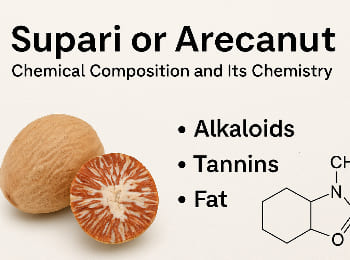
Supari or Arecanut: Chemical Composition and Its Chemistry
Explore the science behind this ancient nut that powers India’s supari industry.
Introduction
Supari, also known as arecanut or betel nut, is more than just a traditional ingredient in paan — it’s a chemically complex seed with active compounds that have fascinated scientists, farmers, and global markets alike. Let's break down what it's made of and why it matters.
Key Chemical Components in Arecanut
-
Alkaloids (1.5–2.7%)
-
Arecoline (Primary): A psychoactive alkaloid, responsible for its stimulating effects.
-
Arecaidine, Guvacine, Guvacoline: Known for their biological activity.
-
These alkaloids affect the central nervous system and play a key role in its usage.
-
-
Tannins (15–20%)
-
Provides the astringent taste.
-
Important in processing (boiling/drying) as it affects supari texture and color.
-
Also known to have antimicrobial properties.
-
-
Fat (14–15%)
-
Makes it suitable for oil extraction in some uses.
-
Affects supari quality and appearance during drying.
-
-
Polysaccharides
-
Natural sugars that impact sweetness, color, and consistency.
-
-
Flavonoids
-
Natural antioxidants present in arecanut that affect shelf life and health value.
-
Understanding Its Chemistry
-
Arecoline (C8H13NO2) is an alkaloid similar to nicotine. It acts as a muscarinic receptor agonist — meaning it stimulates the brain and nervous system, which explains why supari is considered addictive.
-
Tannin Chemistry: Tannins in supari are hydrolyzable and condensed types, responsible for the brown color when dried and the reddish stain in the mouth when chewed.
-
Reaction with Lime (Calcium Hydroxide): When chewed with lime, it enhances alkaloid absorption, increasing the stimulant effect.
Conclusion
Supari isn’t just a tradition — it’s a product of rich biochemistry. From its alkaloid composition to its fat and tannin content, understanding the science behind arecanut helps us process, market, and consume it more effectively.
